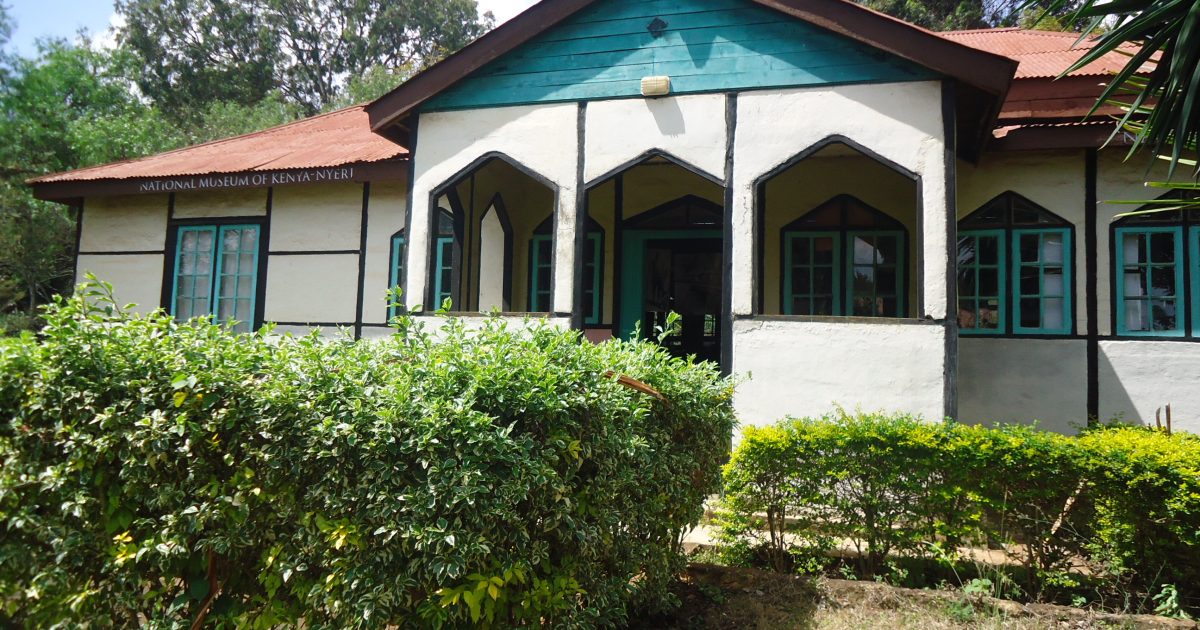At face value, Nyeri museum would easily pass for a white man’s holiday home, going by the pristine ornate gates, the maroon iron-sheet roof that has stood the test of time and the well-manicured garden surrounding the building.
The only sell out that the house is actually a museum are the white inscriptions painted on the fascia board that reads, National Museums of Kenya-Nyeri.
Built 97 years ago, the museum was Nyeri’s first native law court. The colonial government was so organized such that to avoid rebellion from the locals, they appointed chiefs and clan elders who used to handle tribal litigation using customary laws to act as judges in the newly set up court.
The main courtroom takes the shape of a sunken hall. The sitting arrangement assumes a U-shape which can hold a total of 30 people. On one row are five elevated seats and this is where the judge and his four-man retinue would sit.
Duncan Njuguna, the museum’s assistant curator says that no woman was allowed on that row. Witnesses from both sides would sit on either side of the judges’ section, while the accused often took their place in front of the judge’s bench.
It was here that disputes relating to theft, debt and domestic disagreements were resolved. But with time it gained popularity as a court that dealt with pregnancy disputes. Njuguna says the presence of the court only meant that young men became more cautious of how they interacted with girls.
“This was no place for any young man who had had a fling with someone’s daughter or anyone who had plans of becoming a deadbeat father. The court process first stripped you of your dignity then your family or clan had to help you bear the burden of paying the penalty if you were found guilty and that was embarrassing,” he says.
The penalties for those found guilty ranged from a handshake, payment of a prescribed number of livestock, to brutal punishments like binding yourself with a curse and serving some detention time in the one cell that is adjacent to the courtroom.
“The cell also acted as a holding area for suspects who were waiting for their hearing or a mention of their case,” adds Njuguna.
However, after operating for nearly 60 years, a modern and bigger court was constructed in Nyeri town to accommodate the rising demand of legal services. This now meant that the native court remained unused and unmanned which eventually paved the way for vandals to check-in leading to the loss of artifacts.
“The lowest moment for this court’s history was an attempt by a private developer to convert this hall into a night-club but that was before the National Museums of Kenya took over the premises in 2001,” narrates Njuguna.
After a face-lift, the court that was famous for keeping young men in check morphed into a museum.
Today it is home to relics such as iron shields, helmets, and hand-made guns used by the Mau Mau during the colonial imposed emergency period.
Besides the weapons, stone bricks carved out by detainees at the Aguthi Work Camp (now Kangubiri Girls High School) and a 64-year-old passbook that the British government used to control movement of the Kikuyu, Embu and Meru are also on display.
Visitors get treated to a walk down Kenya’s colonial era memory lane, the struggle to attain independence and Kenya after independence, all told by the black and white portraits that hung graciously on the museum’s walls.
“This is just a summary of how far the country has come and also highlights Kenya’s darkest moments like the post-election violence and the terrorist attacks that shook our country’s stability at some point,” explains the curator.
Surprisingly, entry to the museum is free, but ironically it only seems to attract cultural groups and Mau Mau veterans who host their meetings in the Museum grounds.
By Benjamin Amukangu and Esther Mwangi





